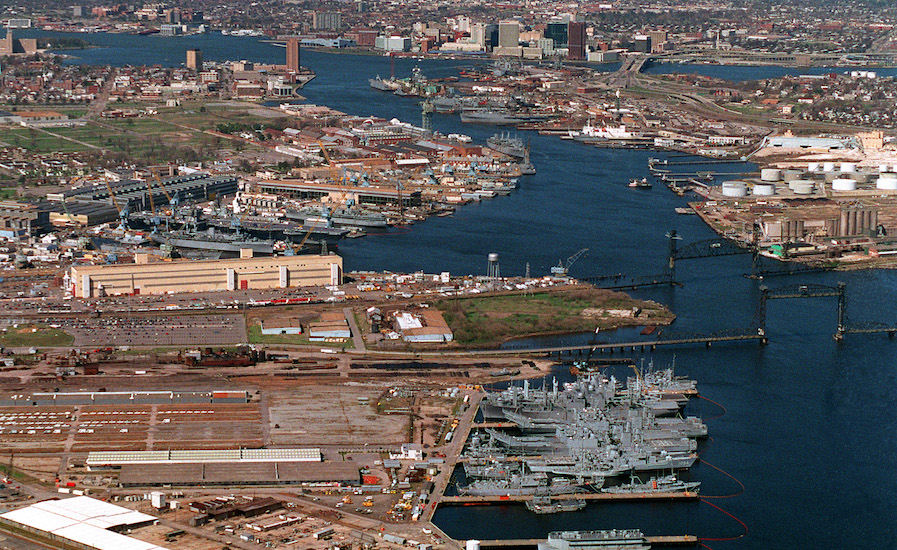The U.S. Navy’s four public shipyards have accumulated nearly $5 billion worth of deferred maintenance and restoration projects that could take as long as 19 years to rectify, according to a recently published U.S. Government Accountability Office report.
Using on-site investigations, interviews and an analysis of fiscal year 2000-2016 facilities data, the GAO assessed the condition of Norfolk Naval Shipyard in Virginia, Pearl Harbor Naval Shipyard and Intermediate Maintenance Facility in Hawaii, Portsmouth Naval Shipyard in Maine and Puget Sound Naval Shipyard and Intermediate Maintenance Facility in Washington state. All four shipyards have been in operation for more than a century and have taken on more responsibilities as the Navy has shut down other facilities.
Yet, over the past 11 years, the Navy has allotted little more than half of the estimated $750 million needed for capital improvements at the shipyards. And since 2012, the cost of the backlog has increased by more than 40%.
According to the report, the shipyards are rife with substandard facilities and out-of-date equipment, with dozens of buildings either condemned or unsuitable for repair activity. The shipyards have made do by purchasing or renting temporary facilities. In one case, inspectors found an enclosed work area constructed of plastic sheeting and duct tape.
In addition, dry docks originally constructed for servicing sail and steam vessels provide inefficient venues for handling modern aircraft carriers and submarines, the shipyards’ primary focus.
The GAO report noted that maintenance delays cost the Navy 1,300 operational days between 2000 and 2016, resulting in multiple aircraft carriers and submarines being unavailable for service.
Without adopting “a comprehensive, results-oriented approach to addressing its capital investment needs,” the report concludes, the shipyards’ continued deterioration will hinder the Navy’s ability “to efficiently and effectively support” long-term readiness.
The GAO recommends a comprehensive plan for shipyard capital investment that establishes the desired goal for the shipyards’ condition and capabilities, with metrics for assessing progress and more-accurate measurement of the capital investments’ effectiveness.






Post a comment to this article
Report Abusive Comment